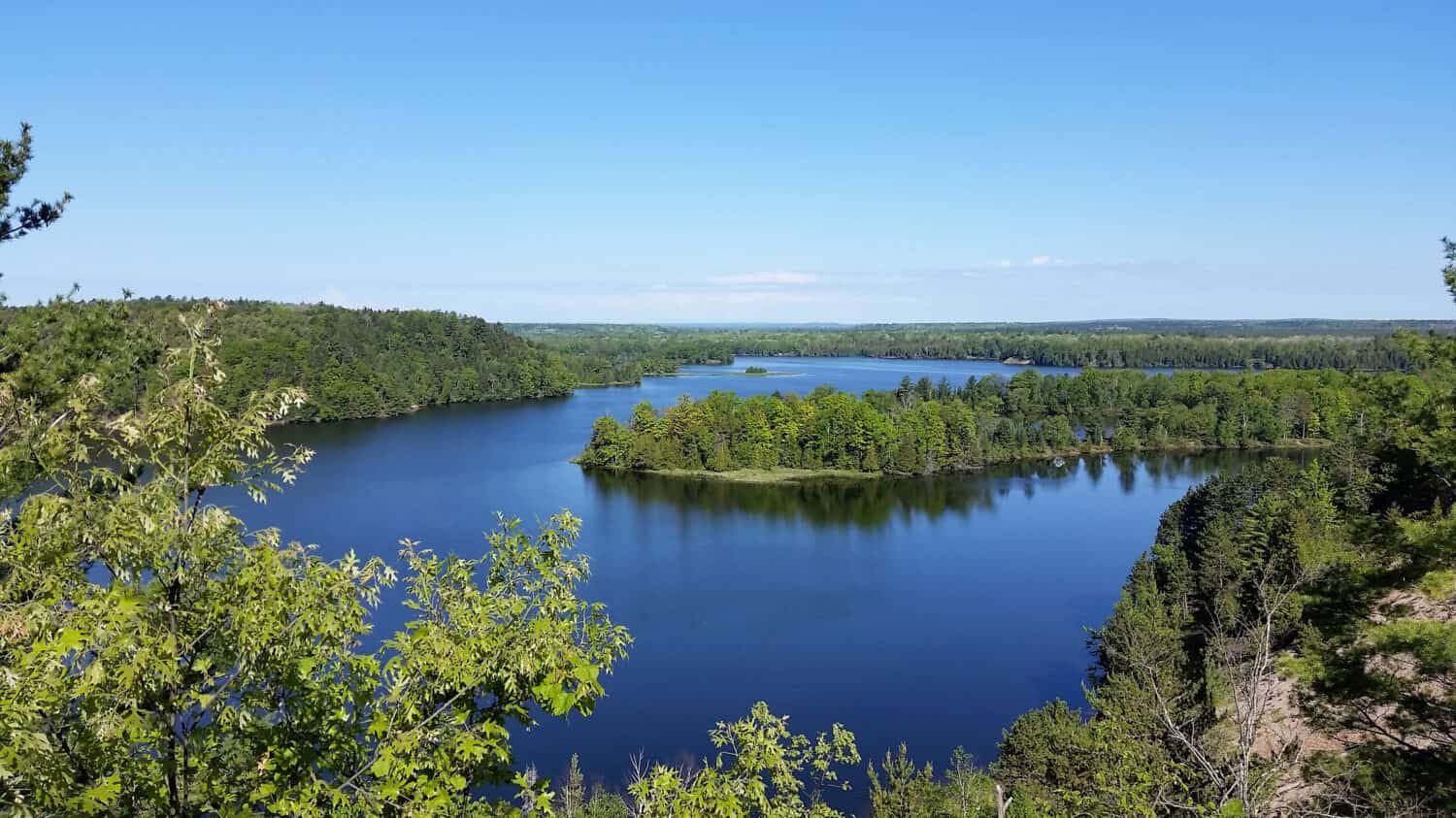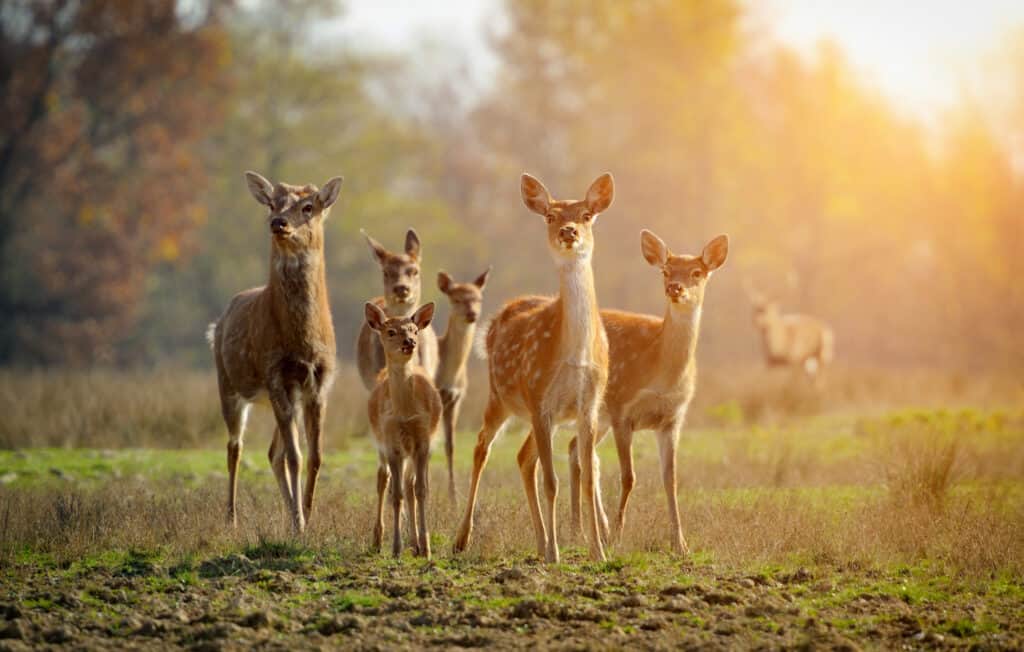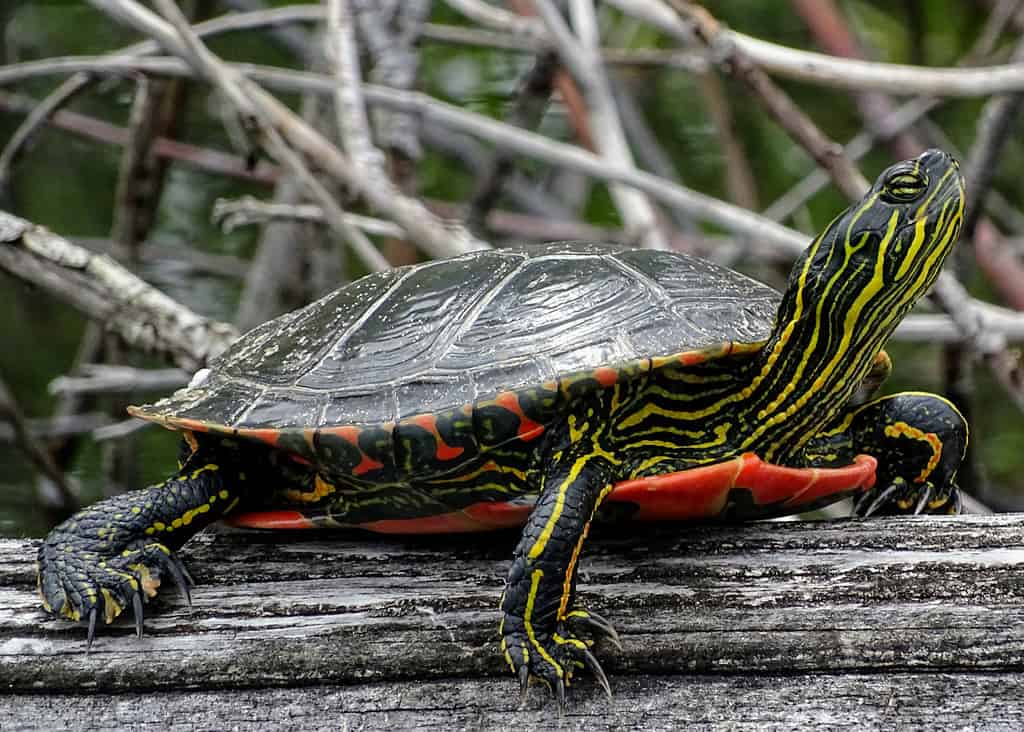The Climate of Michigan
Michigan is a midwestern state in the Great Lakes Region of the United States. These Great Lakes have an important part in determining the climate in Michigan. Michigan’s Lower Peninsula is bordered by Lake Michigan in the west and by Lake Huron and Lake Erie in the east. The Upper Peninsula of Michigan is bordered by Lake Superior to the north, Lake Michigan to the south, and Lake Huron to the southeast. These lakes significantly impact Michigan’s weather, particularly in the areas near the lakes’ shores. As a result, shoreline communities experience warmer winter weather and colder summer weather compared to communities further inland.
Michigan gets between 30 and 38 inches of precipitation each year. In general, southwest Michigan gets the highest amount of precipitation. Two areas also experience the “lake effect” most dramatically. The first is the south shore of Lake Superior in Michigan’s Upper Peninsula. The other are the communities on the eastern shore of Lake Michigan in Michigan’s Lower Peninsula. These regions often receive two to three times more snow than other parts of Michigan.
Temperatures vary throughout the state, moderated by proximity to the Great Lakes. Typically, the southern parts of the state are warmer and have an annual range of temperatures between 18 and 82 degrees Fahrenheit. Northern parts of Michigan tend to be colder, with temperatures from 3 to 75 degrees Fahrenheit each year.

Great Lakes of North America political map showing Lakes Superior, Michigan, Huron, Erie, and Ontario.
©iStock.com/PeterHermesFurian
The Hottest Temperature in Michigan Ever Recorded
The highest recorded temperature in Michigan’s history was in Mio on July 13, 1936. This temperature came during a dramatic heat wave that exhibits just how much the entire state of Michigan can have wide variations in temperature. Michigan’s all-time lowest temperature recorded was in 1936 in the community of Vanderbilt. At the time, the temperature dropped to a frigid –51 degrees Fahrenheit. Only 13 other states have achieved temperatures below –51 degrees Fahrenheit.
The highest temperature in Michigan came during a severe heat wave that occurred the week of July 8 to July 14, 1936. This week was the most severe heat wave experienced in Michigan and among the worst in United States history. All seven days saw temperatures over 100 degrees. The community of Saginaw saw its highest-ever temperatures, with peak heat at 111 degrees Fahrenheit on July 14.
This heatwave was also a tragedy for communities throughout Michigan. In Detroit, 364 people died from the heat, with elderly people and infants being the most vulnerable. Across the state, 570 people died during the heat wave. 14 other states also recorded their all-time hottest temperature during the summer of 1936. Nationally, 5,000 people died due to the heat in Michigan and other states experiencing a similar spike in temperatures.
The History of Mio, Location of the Hottest Temperature in Michigan
Mio is an unincorporated community and census-designated place in Oscoda County. Today, about 1,700 people live in Mio. Oscoda County as a whole is the least-populous county in the Lower Peninsula and is a rural community within the Huron National Forest.
Oscoda County is known for its extensive trail system, which allow visitors and residents to enjoy outdoor activities all-year long. The forest and trails attract people who come for the canoeing, camping, cross-country skiing, fishing, hiking, snowmobiling, shopping, bird watching, and much more!
Before European settlement, the area that is now Michigan was once a vast expanse of forest. Many Native tribes lived in the area. Following European settlement in this area, many people began logging and farming. In fact, the forested land was heavily logged and the forest resources depleted throughout the 19th century and part of the 20th century. This land was privately owned, but when farmers in the area began suffering from economic losses in the Great Depression, the Forest Service purchased the land. This helped the farmers and injected cash into the suffering economy. However, the land purchases were split up.
Huron National Forest was established in 1909 by the Forest Service. Today, the Huron National Forest is 437,287 acres in total. It was renamed in 1929 to honor the native an Iroquoian tribe of the Great Lakes Region known as the Hurons.
The forests are cared for by a team of botanists, biologists, archeologists, and other specialists who maintain the endangered/sensitive species’ habitats and oversee the health of the forests.

Lake Huron National Forest contains Mio, where the hottest temperature in Michigan was recorded.
©Nick Wolf/Shutterstock.com
Ecology and Wildlife
Oscoda County is located in the Huron National Forest, in the heart of the AuSable River Valley. This area of Michigan is full of incredible outdoor exploration opportunities and activities. Visitors will find gorgeous lakes, rivers, wildlife, and forest terrain. Huron National Forest, along with the Manistee National Forest, covers almost one million acres in the northern region of Michigan’s Lower Peninsula. The forests sit between Lake Michigan and Lake Huron and offer trails, campgrounds, and beautiful rivers throughout the forests.
Huron National Forest is absolutely teeming with wildlife! Over 400 bird species make their home in the Forest and 200 other species of wildlife live throughout the state.
If you visit, you may see animals such as the Canada Goose, mallard duck and other duck species, bald eagle, red-tailed hawk, osprey, turkey vulture, American kestrel, and other raptors. Also look out for owl species such as the great-horned owl, northern hawk owl, and barred owl. The forest is home to four different species of woodpecker and many other birds, including the American gold finch, robin, black-capped chickadee, ruffed grouse, great blue herron, and dozens of others.
In the water, you may see mammals such as the muskrat, beaver, river otter, or mink. The areas near rivers and lakes may also be a great place to find reptiles such as wood turtles, painted turtles, and the common snapping turtle, as well as several snake species that live in Michigan. Do not forget to look for amphibians like over 10 species of frog, salamanders such as the mudpuppy and blue-spotted salamander, or toads. In the water, there are native fish species such as brown trout, rainbow trout, and brook trout.
On the land, you can find mammals in Michigan ranging from the adorable chipmunk to red-tailed deer, cotton tail rabbit, porcupine, skunk, red fox, and weasel. You may also find larger mammals such as the black bear, coyote, or bobcat.

Michigan is home to many mammals, including deer.
©Volodymyr Burdiak/Shutterstock.com
Animals that Thrive in Heat
Many of these animals listed above do not necessarily thrive in extreme heat. However, some reptiles, such as the painted turtle and snakes, will enjoy warmer sunny weather. Mammals such as bears, coyotes, and mountain lions are better able to cope with heat. Smaller wildlife, and those dependent on water, suffer the most. This can put birds, amphibians, and fish at-risk in extreme heat.

Some animals (like a painted turtle) survive better in heat, like that of the 112-degree day that had the hottest temperature in Michigan.
©iStock.com/Dave Acheson Photography
Things to Do in Oscoda County
Visit the area that once had the hottest temperature in Michigan! Whether you are an avid hiker, birdwatcher, snowshoer, or prefer a different form of outdoor adventure, Oscoda County is a great place to get outside and enjoy wildlife and nature!
The photo featured at the top of this post is © Dave Manning/Shutterstock.com
Thank you for reading! Have some feedback for us? Contact the AZ Animals editorial team.







